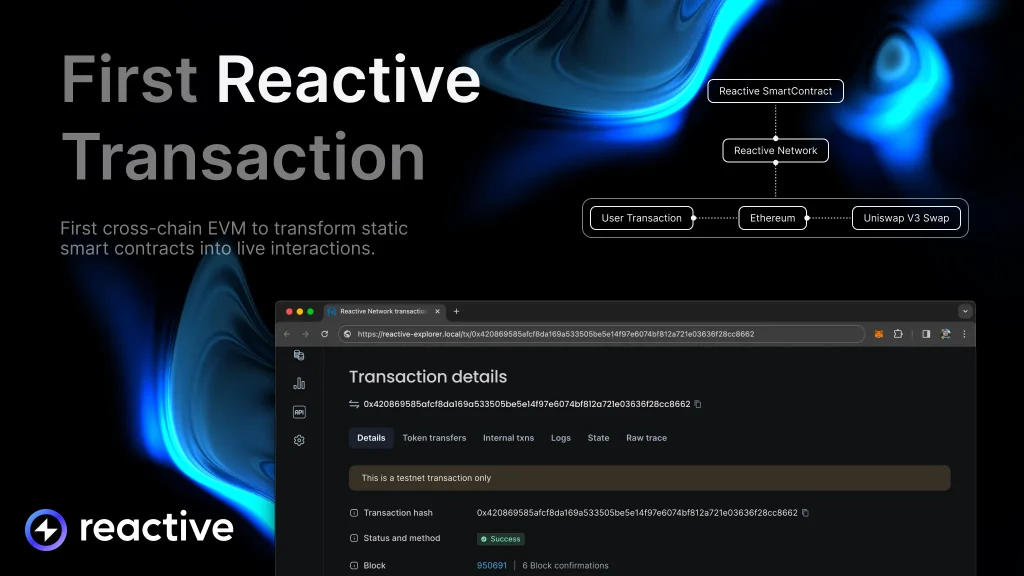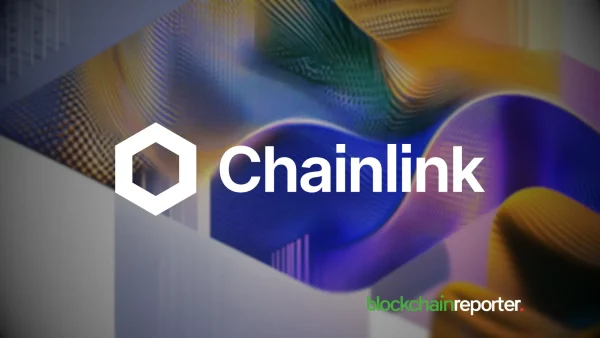
In a significant leap forward for Reactive Network, the first cross-chain EVM to transform static smart contracts into live interactions by PARSIQ, the platform has successfully executed its first reactive transaction. This marks a momentous achievement in the realm of decentralized blockchain technology, showcasing the potential of seamless automated cross-chain communication.
This development underscores Reactive Network’s commitment to facilitating on-chain reactions to events across diverse blockchain ecosystems, heralding a new era of multi-chain interactivity. The breakthrough transaction occurred in response to a Uniswap V3 swap involving the PARSIQ Token (PRQ), providing a tangible demonstration of the capabilities of Reactive Smart Contracts (RSCs) in action. This accomplishment signifies not only a technological triumph but also a step towards unlocking the practical utility of Reactive Network in real-world scenarios.
Reactive Network’s Unique Approach to Blockchain Interactivity
Reactive Network, or simply Reactive, represents a paradigm shift in the evolution of blockchain technology. Its primary objective is to establish a unified and trustless environment for multi-chain interactivity, streamlining the development process of decentralized applications (dApps) across diverse blockchain ecosystems.
What sets Reactive apart is its innovative solution to the “Blockchain Oracle Problem” through an event-driven approach. Leveraging principles from reactive programming and extensions, Reactive Network introduces the concept of Reactive Smart Contracts (RSCs). These contracts operate not on user interactions but on data flows from multiple blockchain ecosystems, providing a novel approach to decentralized computation.

The completion of the first reactive transaction is a significant milestone for Reactive Network. Triggered by a Uniswap V3 swap of PRQ, this transaction exemplifies the practical utility of Reactive Smart Contracts. Beyond its technical implications, this achievement opens the door to a new generation of interactive dApps and Smart Contracts that transcend the confines of their native ecosystems.
Daniil Romazanov, CTO of PARSIQ, reflects on the milestone, emphasizing, “This first reactive transaction is an important milestone in the development of Reactive Network, marking the team’s dedication in achieving the goals set in front of it. But it’s no time for us to relax, there are many issues to be solved and research to be conducted. The team is juggling many streams at the same time, including event consensus, relaying, proving mechanism and many more.”
Scalability and Efficiency at the Core
Reactive Network stands out for its remarkable scalability, made possible by parallelizing the Ethereum Virtual Machine (EVM). Through the simultaneous execution of Reactive Smart Contracts, developers can transfer data-driven computations away from the primary blockchain layer. This transition not only reduces gas consumption but also capitalizes on the cost-effectiveness of state changes.
The outcome is an enhanced, scalable blockchain ecosystem, set to transform our understanding of blockchain interactivity and the development of dApps. As today’s successful reactive transaction marks just the beginning for Reactive Network, the platform aims to bridge gaps between various blockchain ecosystems.
The achievement not only has technical implications but also opens the door to practical applications in the real world. The hope is that Reactive Network will emerge as a trailblazer in a new era of blockchain technology, unlocking limitless possibilities for developers and users in the decentralized applications landscape and beyond.









